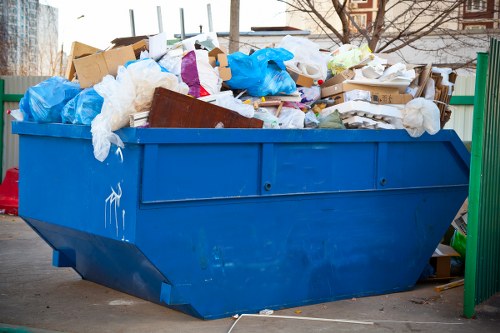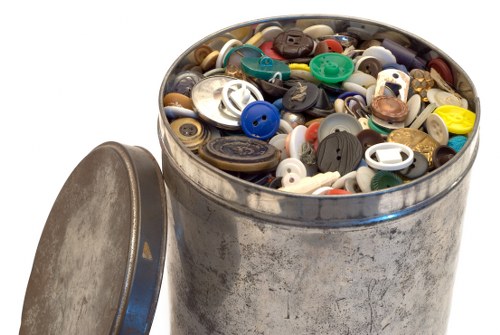Efficient Builders Waste Clearance in Rubbish Removal
Understanding Builders Waste Clearance

Builders waste clearance is a critical component of any construction or renovation project. Efficient rubbish removal ensures that construction sites remain safe, compliant with regulations, and free from unnecessary clutter. Managing waste effectively not only promotes a cleaner environment but also enhances the overall workflow on-site.
Proper clearance involves the removal and disposal of various types of waste generated during building activities, including concrete, wood, metals, and packaging materials. By addressing waste promptly, builders can maintain productivity and prevent potential hazards associated with accumulated debris.
Implementing a strategic waste clearance plan can significantly reduce the environmental impact of construction projects. Recycling and reusing materials wherever possible contribute to sustainability efforts and can even lead to cost savings.
Types of Builders Waste

Builders waste encompasses a wide range of materials, each requiring specific handling and disposal methods. Common types include:
- Concrete and Bricks: These materials are heavy and require specialized recycling processes.
- Wood Offcuts: Depending on the type of wood, some can be repurposed or recycled, while others must be disposed of carefully.
- Metals: Metals such as steel and aluminum are highly recyclable and can be processed for reuse.
- Packaging Materials: Cardboard, plastics, and other packaging waste must be sorted and recycled accordingly.
Understanding the categorization of builders waste is essential for effective rubbish removal. Proper sorting and disposal not only comply with environmental regulations but also support recycling initiatives.
Additionally, some waste materials may pose environmental hazards if not handled correctly. It's crucial to assess the types of waste generated to implement appropriate clearance strategies.
Benefits of Professional Waste Clearance Services

Engaging professional builders waste clearance services offers numerous advantages:
- Efficiency: Experienced waste removal companies can swiftly and effectively manage the clearance process, minimizing downtime on-site.
- Compliance: Professionals are well-versed in local regulations and ensure that waste disposal meets all legal requirements.
- Environmental Responsibility: Many waste clearance services prioritize recycling and sustainable disposal methods, reducing the environmental footprint of construction projects.
- Cost-Effectiveness: Outsourcing waste management can be more economical than handling it in-house, especially when considering the costs of equipment, labor, and disposal fees.
By partnering with reputable rubbish removal providers, builders can focus on their core activities while ensuring that waste management is handled professionally.
Moreover, professional services often offer tailored solutions to meet the specific needs of different projects, enhancing overall site management.
Steps in the Waste Clearance Process

The waste clearance process typically involves several key steps to ensure efficient and compliant rubbish removal:
- Assessment: Evaluating the type and volume of waste generated to determine the appropriate clearance strategy.
- Sorting: Categorizing waste materials into recyclable, reusable, and non-recyclable categories.
- Collection: Gathering waste from the site using specialized equipment.
- Transportation: Moving the collected waste to designated recycling centers or disposal facilities.
- Disposal: Ensuring that non-recyclable waste is disposed of in compliance with environmental regulations.
Each step is crucial in maintaining an organized and efficient waste management system. Proper execution minimizes environmental impact and ensures that the project remains on schedule.
Additionally, clear documentation and reporting during the clearance process can aid in maintaining compliance and accountability.
Environmental Impact and Sustainability

Effective builders waste clearance plays a significant role in promoting environmental sustainability. By reducing the amount of waste sent to landfills, recycling initiatives help conserve natural resources and minimize greenhouse gas emissions.
Sustainable waste management practices include:
- Recycling Materials: Repurposing materials like metal, wood, and concrete reduces the need for new raw materials.
- Waste Reduction: Implementing strategies to minimize waste generation at the source.
- Energy Conservation: Recycling processes often consume less energy compared to producing new materials.
By embracing these practices, construction projects can contribute to broader environmental goals and demonstrate corporate responsibility.
Furthermore, sustainable waste management can enhance a company's reputation and appeal to environmentally conscious clients and stakeholders.
Choosing the Right Waste Clearance Service
Selecting a reliable builders waste clearance provider involves considering several factors:
- Experience and Expertise: Look for companies with a proven track record in handling construction waste.
- Compliance: Ensure the service adheres to local waste disposal regulations and standards.
- Recycling Capabilities: Choose providers that prioritize recycling and sustainable disposal methods.
- Flexibility: The ability to accommodate varying project sizes and schedules is essential.
- Cost Transparency: Clear and upfront pricing helps avoid unexpected expenses.
Taking the time to evaluate potential waste clearance services ensures that you partner with a provider that aligns with your project's needs and sustainability goals.
Additionally, reading reviews and seeking recommendations can provide insights into the quality and reliability of the service.
Contact us today to learn more about our professional builders waste clearance services and how we can support your next project.



